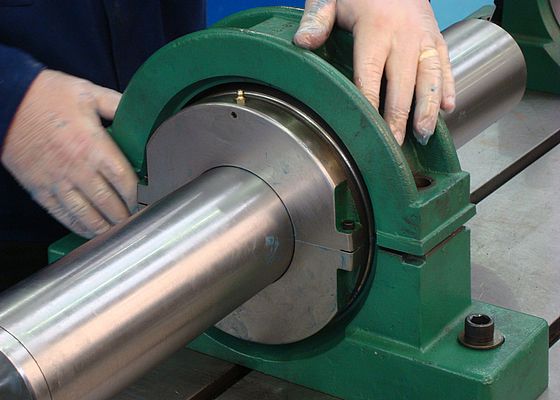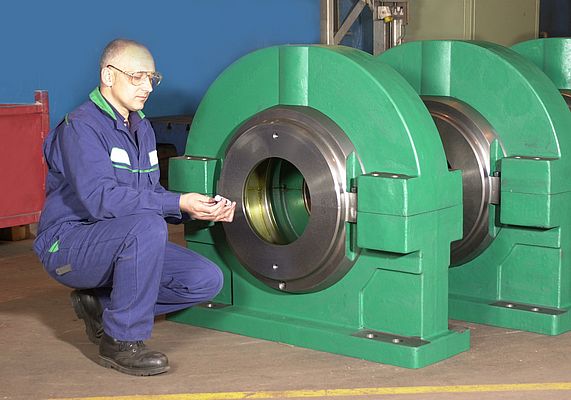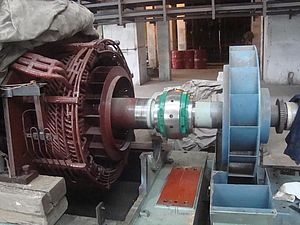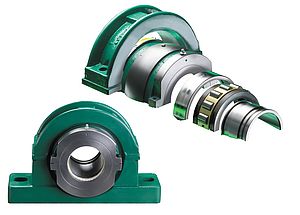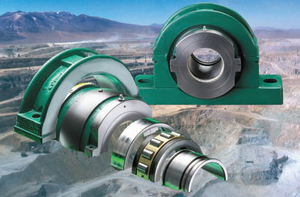In industrial application it is almost impossible to fit a bearing to a shaft while perfectly aligning both the bearing's support pedestals perpendicular to the shaft, and correctly aligned to other shaft mounted equipment, such as couplings and drives
A recent survey by a leading global bearing manufacturer concluded that around 25% of all rolling element bearings fail prematurely, due to ineffective and inefficient seals. Sometimes bearings are specified with seals that are not fit for purpose for the demands of the application; seals can also be ineffective under conditions of shaft misalignment. Whatever the root cause of the problem, when seals fail in keeping contamination out of the bearing, and lubricant in, the end result is the same – premature bearing failure that usually results in costly replacement and downtime.
Whilst most bearing users normally take care to specify the type of seal to be used, one design consideration often overlooked by both end users and OEMs which can negate a seal's effectiveness and result in early failure is the issue of shaft misalignment.
When fitting a bearing to a shaft in an industrial application it is almost impossible to perfectly align both the bearing's support pedestals perpendicular to the shaft, and correctly aligned to other shaft mounted equipment, such as couplings and drives. This is especially the case with long shafts mounted on fabricated structures. Because small values of shaft misalignment are common it is often overlooked by end users and OEMs as a possible cause of early bearing failure, as they naturally assume tolerances will be factored into the design.
Traditional plummer block mounted solid spherical roller bearings are able to accommodate small degrees of shaft misalignment thanks to their internal geometry; the spherical profile of the rolling elements and raceway enables the bearing to accept some misalignment of the shaft. However, because the bearing's seals are located rigidly in the plummer block housing, it is possible that under conditions of shaft misalignment the seals will no longer be concentric to the shaft.
When the shaft is at an angle of misalignment of more than 1.5 degrees, the seals are usually no longer able to make contact with the full circumference of the shaft, resulting in a gap between shaft and seal. Therefore in operation the seal can no longer protect the bearing from contamination, or retain its lubricant. As a result premature bearing failure becomes inevitable, even with seals and bearings of the highest quality.
Adrian Menzies, Sales and Marketing Director for Revolvo, comments: "Shaft misalignment can cause real problems to the functionality of a bearing, yet it is often overlooked during purchasing. Once installed the gap between the seal and the shaft may be too small to be clearly visible, unfortunately this won't stop ingress and the resulting early bearing failure. For peace of mind all of our SRB split roller bearings are designed to accommodate shaft misalignment without reducing the effectiveness of the seal."
The SRB bearing's design locates both the bearing and the seal within a separate swivelling housing, which is then located within a support pedestal. The external surface of the housing and the internal surface of the support pedestal are spherical, creating a swivelling socket joint which accepts up to +/-3 degrees of static misalignment and ensures that the seals always remain concentric to the shaft. This provides optimum sealing performance which ensures that the bearing is far more likely to achieve its designed life.
As well as offering superior sealing geometry, SRB split roller bearings are available with a wide variety of sealing solutions. Revolvo is part of the Eriks Group – one of the world's leading suppliers of engineered seals, and benefits from all of Eriks extensive resources in developing and manufacturing high performance seals. Starting from off-the-shelf arrangements, such as felt and lip seals, options extend to triple labyrinth seals that have precision, non-contact characteristics and are able to accommodate both very high speeds and high levels of environmental contamination. Bespoke custom engineered sealing solutions can be offered by Revolvo's expert application engineers who are experienced in developing and manufacturing sealing solutions to suit specific applications from dust and aggregates, to liquids and sludge.


